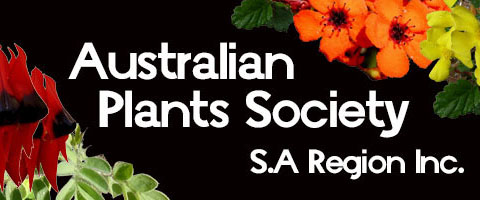Australian Plants for Adelaide Gardens - How to Plant
Page 6 of 12
How to Plant
This may vary slightly according to soil conditions and topography. Normally, a hole should be prepared which is only slightly larger than the container in which the plant is growing and ideally the soil should be moistened.
It is important to plant with a minimum of root disturbance. Ensure that the potted soil is thoroughly moist before removing the plant from the container. Most plants can be gently removed from a tapered container by placing a hand over the top surface with the plant stem between the second and third fingers - turn upside-down and tap the pot edge on a solid object to free the plant.
With straight-sided tubes and plastic bags the plant can usually be removed in similar fashion to the above, although a firm squeeze around the middle circumference of the container prior to turning upside-down will usually free the more difficult ones. Plastic bags need to be gently shaken, not tapped. In very difficult instances where the plants refuse to budge, one side of the container can be carefully slit with a razor blade or sharp knife and the container taken from the soil.
If the plant is pot bound, the roots should be carefully loosened and the most twisted ones cut off before planting.
Place the plant in the prepared hole so that the top of the soil in which it is growing corresponds with the soil at ground level. After planting, carefully firm the soil around the plant, water thoroughly and fill in any soil subsidence which occurs.
A shallow saucer about 500mm to 600mm diameter can be provided around each plant to hold water (except where drainage is poor) and this can be filled with mulch which will conserve moisture and insulate the root system from temperature extremes. The mulch should be kept away from the plant trunk to reduce the danger of collar rot.
At the time of planting a handful of organic fertiliser such as "Blood and Bone" can be beneficial in some soils if placed a few centimetres below the root zone of the young plant and covered with soil so that the roots do not contact the fertiliser initially.
In some areas it may be necessary to protect the plant from wind damage, frost or animals for the first few years. Hessian tied to four stakes 500-600mm apart will provide for this. Do not use sheet metal because it radiates too much heat in summer and is not enough insulation against frost.
Stakes should only be used if the plant needs support - and then do not let them remain too long or the plant will become dependent on them.
If staking is considered necessary always use two or more stakes with the ties lightly tensioned to avoid bruising but allowing for natural flexing of the tree so it can develop its own strength. Pieces of garden hose or pantyhose around the point of restraint are ideal.
Low growing, spreading plants can be tripod staked with the tree prunings angled through the foliage.



